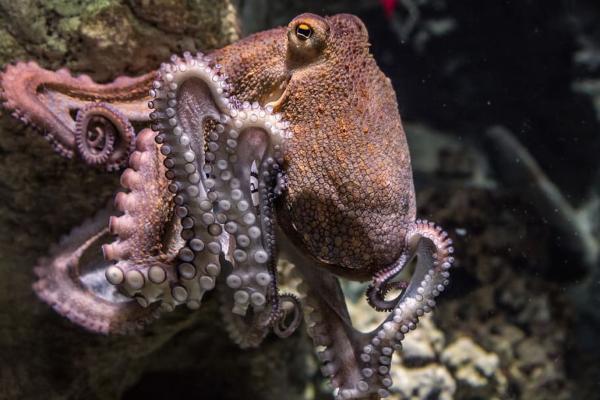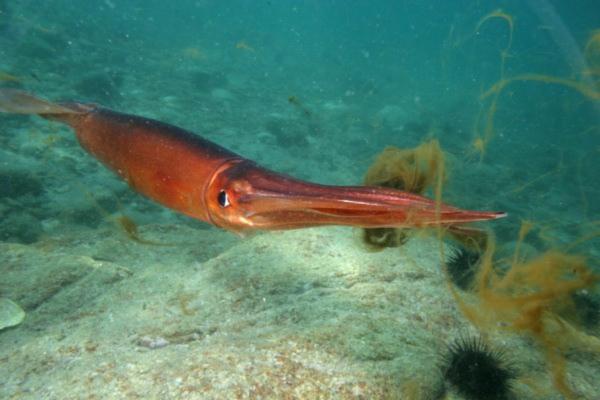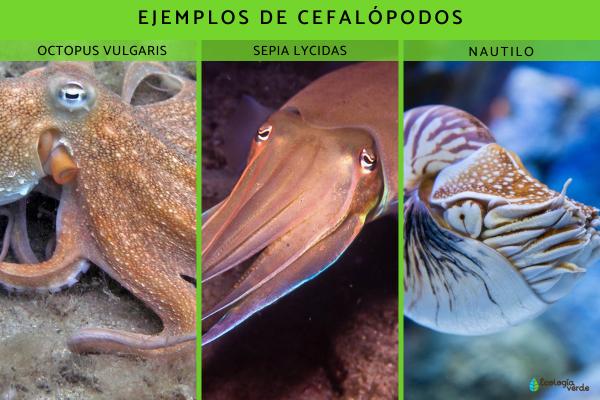Cephalopods are exclusively aquarium/52-marine-animals.html">marine animals found throughout the world’s oceans, predominantly inhabiting warm and temperate waters. They are known for their large heads, multiple flexible arms and tentacles surrounding the mouth, which aid in locomotion and capturing prey.
Octopuses and squids are among the most familiar cephalopods, distinguished by their remarkable intelligence and complex behaviors. These traits set them apart from their closest relatives—snails and bivalves—as well as other invertebrates. In this article, we explore what cephalopods are, their main examples, characteristics, diet, habitat, and reproduction.

Cephalopods belong to the class Cephalopoda, meaning “head-foot” in Greek. This class is part of the mollusk phylum, making cephalopods relatives of:
Snails
Bivalves (clams, mussels)
Despite their shared ancestry, cephalopods exhibit far superior intelligence. Their neuron count rivals that of dogs and some primates, with about two-thirds of neurons distributed throughout their arms rather than centralized only in the brain.
Complex anatomy: Possess two eyes, a mantle covering the body, a siphon for jet propulsion, and 8 to 10 tentacles (nautiloids can have up to 90).
Shell evolution: Internalized in squids and cuttlefish; completely lost in octopuses; external and chambered in nautiluses.
Tentacles: Extendable and retractable, primarily for prey capture; covered with suckers.
Highly developed vision: Eyes comparable in complexity to human eyes, featuring iris, pupil, lens, and in some cases a cornea. Recent studies suggest potential color vision abilities.
Locomotion by jet propulsion: Water is sucked into the mantle cavity and expelled forcefully through the siphon, propelling the animal backwards. Some octopuses use arms for crawling.
Camouflage ability: Specialized pigment cells called chromatophores allow rapid color and texture changes for effective camouflage.
Ink production: Most species (except nautiluses and some cirrate octopuses) eject ink clouds to confuse predators and aid escape.

Includes octopuses (Order Octopoda) characterized by eight flexible arms with two rows of suckers each. They lack an external shell, allowing them to squeeze through tight crevices. Known for high intelligence and diverse behaviors.
Examples:
Common octopus (Octopus vulgaris)
California two-spot octopus (Octopus bimaculoides)
Giant Pacific octopus (Enteroctopus dofleini)
Comprises squids and cuttlefish with five pairs of limbs, including two specialized tentacles for capturing prey. Cuttlefish possess an internal shell with air chambers for buoyancy control.
Cuttlefish: Typically bottom dwellers in sandy or rocky environments up to ~250 meters depth.
Examples: Sepiadarium auritum, Sepia lycidas, Sepia officinalis
Squid: Elongated internal shell ("pen") serves as support; can live at depths exceeding 3,000 meters; often solitary but some species form populations.
Examples: Loligo vulgaris, Doryteuthis pealeii, Dosidicus gigas
The only cephalopods retaining an external, chambered shell filled with gas to regulate buoyancy. Around the mouth, they have 60 to 90 tentacles arranged in two circles.
Cephalopods inhabit all oceans worldwide. Some live near coastal seafloors (e.g., Sepia officinalis), others occupy midwater pelagic zones (e.g., Joubiniteuthis portieri). The blue-ringed octopus (Hapalochlaena lunulata) even inhabits saltwater coastal lagoons.
All cephalopods are carnivorous. They have a hard beak surrounded by muscles that act like scissors to tear prey apart. Behind the beak is a ribbon-like radula with rows of tiny teeth, used to scrape or cut food.
Common prey includes:
Crustaceans
Worms
Other mollusks
Tentacles bring prey closer, while suckers ensure a firm grip. Some squids (e.g., colossal squid Mesonychoteuthis hamiltoni) have hooked suckers for enhanced capture efficiency.

Males and females typically show little external difference beyond size and proportion variations. Males produce spermatophores—sperm-filled capsules—transferred to females via specialized arms.
Eggs are usually:
Gelatinous
Transparent or opaque
Laid on rocky substrates or shells resting on the ocean floor. Octopuses commonly guard their eggs until hatching. Although cephalopods lack a true larval stage, hatchlings often differ markedly from adults, historically causing taxonomic confusion.
Want to learn more about cephalopods and other fascinating marine life? Check out our Wild Animals category for in-depth articles.
References
Alexander L. Stubbs, Christopher W. Stubbs. Spectral discrimination in color blind animals via chromatic aberration and pupil shape. (2016). Available at: https://doi.org/10.1073/pnas.1524578113
Hall, D. (s.f). Cephalopods. Smothsonian Ocean. Available at: https://ocean.si.edu/ocean-life/invertebrates/cephalopods
Jann Vendetti, UCMP. (2006). Lophotrochozoa: Mollusca. The Cephalopoda. Squids, octopuses, nautilus, and ammonites. Available at: https://ucmp.berkeley.edu/taxa/inverts/mollusca/cephalopod.php
animal tags: Cephalopods
We created this article in conjunction with AI technology, then made sure it was fact-checked and edited by a Animals Top editor.